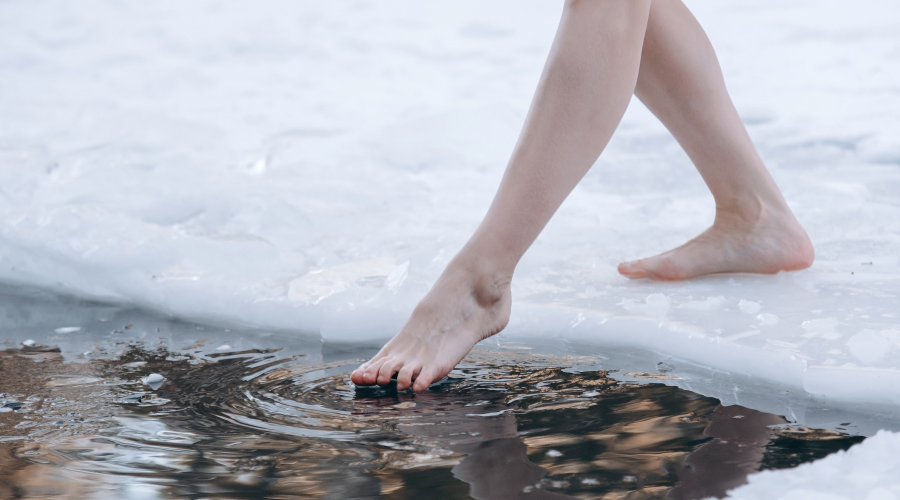

Ice baths are now used by athletes, gym goers and anyone who wants to improve their health and fitness. Ice therapy or the process of bathing in cold water has been recommended for its ability to help in muscle recovery, reduce muscle soreness and offer many other benefits. In this article, we will look at the facts about ice baths, ice bath benefits, and how you can take them.
What is Ice Therapy?
Cryotherapy or ice therapy is the deliberate use of cold temperature on the body for therapeutic reasons. Although there are cryo-chambers for whole-body cryotherapy, ice baths are more common and cheaper. Ice bath is usually done by filling a tub with water and ice and the water temperature is normally between 50°F and 59°F or 10°C and 15°C. The individual then submerges him or herself in the cold water for a certain period of time, which ranges from 10 to 20 minutes.
Ice Bath Benefits
Ice bath benefits are not limited to the physical aspect of the body. In this case, the advantages of ice baths can be of benefit to any person, be it an athlete who wants to improve his or her performance or any other person who wants to improve his or her health.
Muscle Soreness and Inflammation: The Effects of Massage
Ice bath helps to decrease muscle soreness and inflammation, which is one of the most famous benefits. Muscles become inflamed after a rigorous exercise session, and this causes soreness and stiffness of muscles. Soaking in cold water reduces blood flow to the affected area and slows down metabolism, which aids in reducing inflammation and tissue damage. When the body is warmed up after the ice bath, the circulation of blood is enhanced and this helps in the removal of metabolic waste and healing is promoted.
Enhanced Recovery
Ice bath benefits muscle recovery too. Ice therapy is commonly used by athletes and fitness enthusiasts to enhance recovery after a rigorous exercise session. The cold water is useful in minimizing the chances of getting an injury since it cools the affected tissue and slows down the metabolic activity. This can result in a quicker healing process, and people can get back to their training schedule much earlier.
Improved Circulation
Cold water bath can help in increasing circulation because blood vessels contract and expand when the body is warmed up. This process is called vasoconstriction and vasodilation and can assist in increasing blood flow, thus bringing oxygen and nutrients to muscles and organs. This also helps in skin care. Another benefit of ice baths is the improved circulation since it can help in the improvement of cardiovascular health.
Boosted Mental Health
The stress of jumping into an ice bath is good for the mind. This causes the release of endorphins, which are the body’s natural painkillers and mood elevators, when one is suddenly exposed to cold water. Also, the practice of ice therapy can help to enhance the level of wakefulness and decrease stress, which is useful for anxiety disorders and overall mental health.
Strengthened Immune System
The frequent cold water baths may also help to build up the immune system of the body. There is some research that states that cold weather stimulates the production of white blood cells, which are responsible for the body’s defense against diseases and sicknesses. As for the immune-boosting effects of ice therapy, further research is required, but the results look quite encouraging.
Better Sleep
For those who have problems with sleep, they can also reap ice water bath benefits to promote better sleep. The cold water in an ice bath can reduce the body’s temperature and this sends a message to the brain that it is time to sleep. Also, the use of cold water baths can help in reducing stress hence help in improving the quality of sleep.
How to Take an Ice Bath
Ice bath is a very effective way of reducing inflammation and muscle soreness, but it is also very cold and uncomfortable to sit in an ice bath. Here is how to do it.
Start Slowly
If you have not tried an ice bath before, the first time you should try to spend not more than 5-10 minutes in the water and then gradually increase the time.
Monitor the Temperature
The recommended temperature of an ice bath should be between 50°F and 59°F (10°C to 15°C). It is advisable to use a thermometer to check the temperature of the water to avoid going too cold especially if you are a beginner.
Focus on Breathing
The first few seconds are painful and one cannot breathe properly but if one tries to take long deep breaths, the body gets used to the cold water. As time goes on, you will be able to maintain your cool and not get stressed up when you are taking your ice baths.
Limit Frequency
Despite the fact that ice bath benefits are popular, it is necessary not to overtrain. It is recommended that one should take an ice bath once or twice a week to have the best results. Excessive use of ice-bath may cause some side effects such as loss of muscle strength or even hypothermia in the extreme.
Conclusion
Ice therapy is a very useful practice that can help with muscle soreness and inflammation, mental health, and immune system. However, one must be careful when it comes to ice baths and must always heed to the body. Some people may not be able to handle cold exposure as well as others and it is important to find what is comfortable for you. As mentioned in this article, it is possible to use ice baths and get all the benefits they provide without harming your health or experiencing any discomfort.




